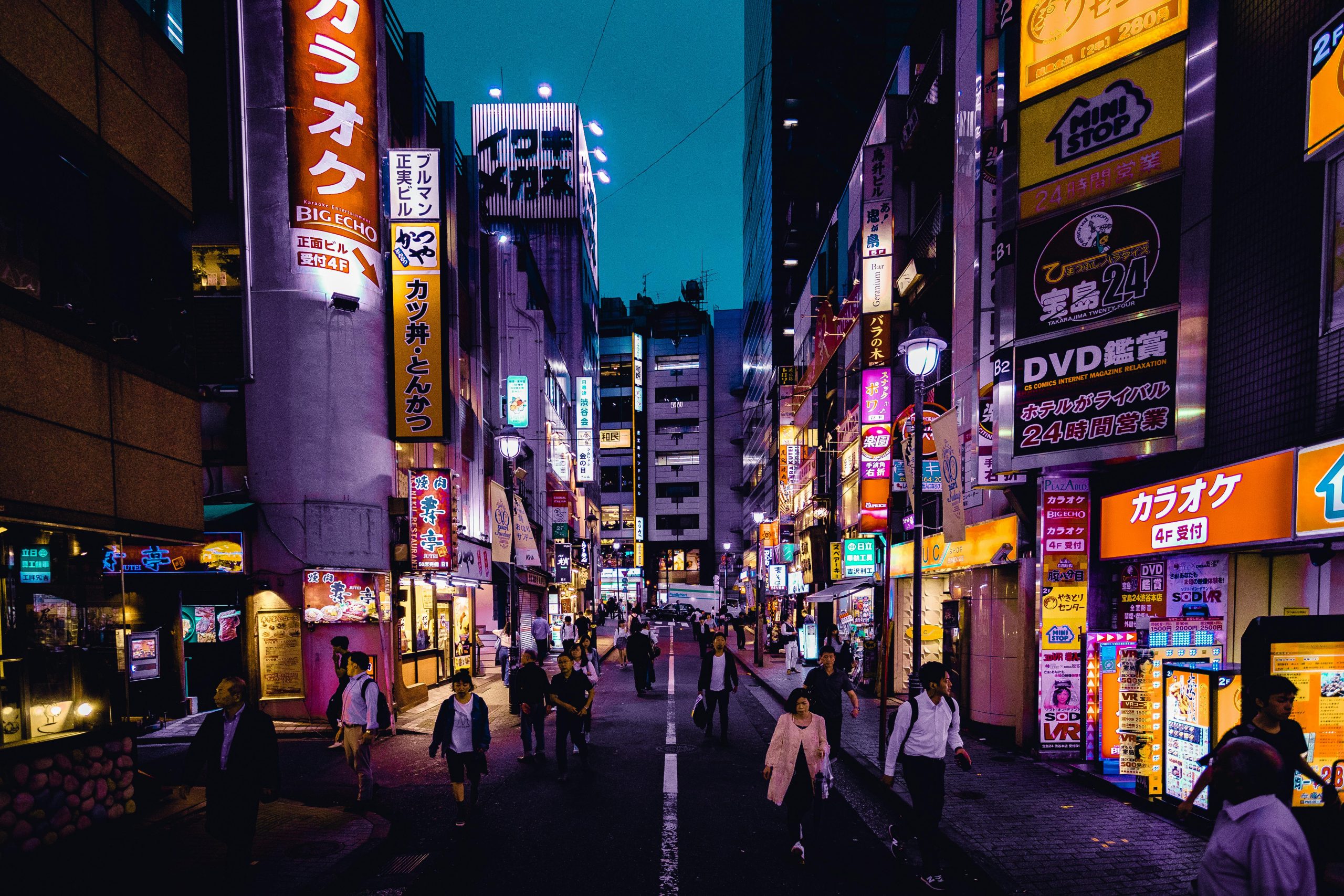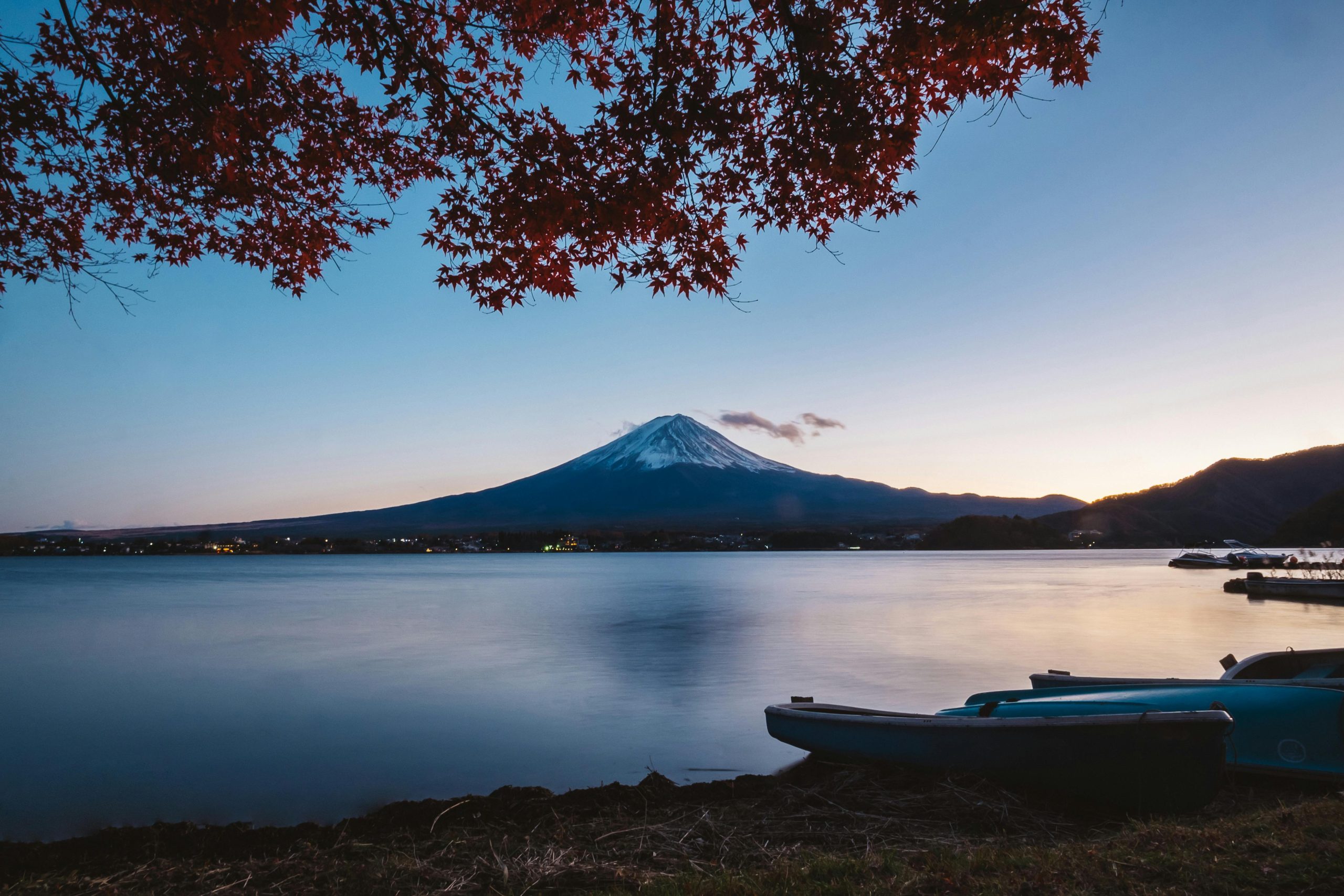الدليل الكامل للمطبخ الياباني: من التقاليد القديمة إلى الابتكارات الحديثة
إليكم سرّ المطبخ الياباني - إنه أكثر بكثير من مجرد سوشي ورامن. عندما زرت طوكيو لأول مرة قبل خمسة عشر عامًا، ظننتُ أنني أعرف كل ما يتعلق بالطعام الياباني. يا إلهي، كنتُ مخطئًا. ما اكتشفتُه هو عالمٌ طهيٌّ قائمٌ على مبادئ تعود إلى أكثر من ألف عام، ولكنه في تطورٍ مستمرٍّ مع التقنيات الحديثة والتأثيرات العالمية.
وفقًا لبحث حديث أجرته وزارة الزراعة والغابات ومصايد الأسماك اليابانية، تم الاعتراف بالمطبخ الياباني التقليدي، المعروف باسم "واشوكو"، من قبل اليونسكو باعتباره تراثًا ثقافيًا غير مادي في عام 2013. لم يكن هذا الاعتراف يتعلق بالطعام نفسه فحسب - بل احتفى بفلسفة كاملة في الطبخ تؤكد على الموسمية والنكهات الطبيعية والعرض الجمالي.
هل تعلم؟
اليابان لديها أكبر عدد من المطاعم الحائزة على نجمة ميشلان مقارنةً بأي دولة أخرى في العالم، حيث تضم طوكيو وحدها أكثر من 400 مطعم حائز على نجمة ميشلان. يعكس هذا التركيز المذهل من التميز الطهوي التزام اليابانيين بالكمال في كل جانب من جوانب إعداد الطعام وتقديمه.
الأسس التاريخية للمطبخ الياباني
تعود جذور المطبخ الياباني إلى فترة هييان (794-1185)، عندما بدأت التأثيرات البوذية تُشكل الممارسات الغذائية. أدى دخول البوذية إلى حظر مؤقت على استهلاك اللحوم، استمر قرابة 1200 عام، وأثر بشكل أساسي على أساليب الطبخ اليابانية. خلال هذه الفترة، أتقن الطهاة اليابانيون فن استخلاص أقصى نكهة من الخضراوات والأسماك والمأكولات البحرية.
يقول الشيف يوشيهيرو موراتا، وهو مالك من الجيل الثالث لمطعم كيكونوي في كيوتو: "المطبخ الياباني لا يتعلق فقط بالذوق - بل يتعلق أيضًا بتكريم الجوهر الطبيعي لكل مكون مع خلق الانسجام في الطبق".
شهدت فترة إيدو (1603-1868) تطور العديد من الأطباق التي نربطها بالمطبخ الياباني اليوم. ازدهرت ثقافة طعام الشوارع، مما أدى إلى ظهور التمبورا، ونودلز سوبا، وسوشي نيغيري. ووفقًا لمؤرخي الطعام في جامعة طوكيو، فقد أرسى هذا العصر أسس تنوع المأكولات الإقليمية في اليابان.
ما يميز المطبخ الياباني ليس مكوناته أو تقنياته فحسب، بل فلسفته الأساسية. يؤثر مفهوم "إيتشيغو إيتشي" (مرة واحدة، لقاء واحد) على كيفية تحضير الوجبات والاستمتاع بها، مؤكدًا على الطابع الفريد لكل تجربة طعام.
العناصر التقليدية والتقنيات الأساسية
هل تعلم ما هو رائع في المطبخ الياباني؟ إنه مبني على خمسة مبادئ أساسية تُوجّه كل تحضير للطبق. هذه ليست مجرد قواعد للطهي، بل هي فلسفة تُحوّل المكونات البسيطة إلى تجارب استثنائية.
الركائز الخمس للمطبخ الياباني
- جو مي (خمسة نكهات): الحلو والحامض والمالح والمر والأومامي
- جو-شوكو (خمسة ألوان): الأبيض والأسود والأحمر والأخضر والأصفر
- جو هو (خمس طرق للطهي): نيء، مشوي، مطهو على البخار، مسلوق، ومقلي
- جو كان (الحواس الخمس): إشراك البصر والسمع والشم والتذوق واللمس
- غو-ريتسو (النظريات الخمس): احترام الطبيعة، والفصول، والروحانية، والتناغم الاجتماعي، والامتنان
الأرز: قلب المطبخ الياباني
الأرز ليس مجرد طبق جانبي في اليابان، بل هو أساس كل وجبة. يُزرع الأرز الياباني قصير الحبة، المعروف باسم "جابونيكا"، منذ أكثر من 3000 عام. وتشير جمعية الأرز اليابانية إلى أن متوسط استهلاك اليابانيين من الأرز سنويًا يبلغ حوالي 119 رطلاً، مقارنةً بـ 20 رطلاً فقط في الولايات المتحدة.
| نوع الأرز | الاستخدام الأساسي | نَسِيج | طريقة الطبخ |
|---|---|---|---|
| كوشيهيكاري | الوجبات اليومية | لزجة قليلا | مطهو على البخار |
| ساسانيشيكي | السوشي | ثابت، أقل لزوجة | متبل بالخل |
| موتشيجومي | موتشي، حلويات | لزجة للغاية | مطهو على البخار |
داشي: روح النكهة اليابانية
إذا كان الأرز هو جوهر المطبخ الياباني، فإن مرق الداشي هو جوهره. هذا المرق اللذيذ، المصنوع أساسًا من عشب البحر (الكومبو) ورقائق البونيتو (الكاتسوبوشي)، يُشكل أساسًا لأطباق لا تُحصى. صرّح الشيف جيرو أونو لمجلة "فود آند واين" ذات مرة بأن "فهم الداشي هو فهمٌ للمطبخ الياباني".
"إن مرق الداشي ليس مجرد مرق، بل هو التجسيد السائل للأومامي، وهو الطعم الخامس الذي يميز المطبخ الياباني"، هذا ما أشار إليه بحث الدكتور كيكوناي إيكيدا من جامعة طوكيو الإمبراطورية، والذي كان أول من عرف الأومامي في عام 1908.
يتطلب فن تحضير مرق الداشي صبرًا ودقة. ووفقًا لأبحاث الطهي الصادرة عن معهد طوكيو للطهي، يجب ألا تتجاوز درجة حرارة الماء 80 درجة مئوية (176 درجة فهرنهايت) عند نقع الكومبو، لأن درجات الحرارة المرتفعة تُطلق مركبات مُرّة تُطغى على نكهة الأومامي الرقيقة.
ما هي أسئلتك حول دمج هذه العناصر الأساسية في مطبخك؟ يكمن جمال المطبخ الياباني في بساطته - لستَ بحاجة إلى مكونات غريبة لابتكار نكهات أصيلة.

التخصصات الإقليمية والتطور الحديث
إليكم ما أدهشني خلال رحلتي الطهوية في اليابان: لكل منطقة طابعها الغذائي المميز. من مأكولات هوكايدو البحرية الطازجة إلى تأثيرات أوكيناوا الاستوائية، تُشكّل جغرافية اليابان نسيجًا من النكهات التي لم يجربها معظم الناس.
هوكايدو: الحدود الشمالية
هوكايدو، الجزيرة الواقعة في أقصى شمال اليابان، تشتهر بمنتجات الألبان والمأكولات البحرية وثرواتها الزراعية. ووفقًا لمنظمة هوكايدو للسياحة، تنتج هذه المنطقة 601 طنًا و3 أطنان من الحليب في اليابان، وهي موطنٌ لبعضٍ من أكثر الطهاة ابتكارًا في البلاد. يوفر شتاء الجزيرة القارس وصيفها الخصيب بيئةً مثاليةً لابتكار فنون الطهي التقليدية والحديثة.
- قنفذ البحر الطازج من المياه الشمالية الباردة
- سرطان هوكايدو، يعتبر الأفضل في اليابان
- جنكيز خان (لحم ضأن مشوي)، يعكس التأثيرات المنغولية
- آيس كريم ناعم مصنوع من منتجات الألبان المحلية
كانساي: القلب الثقافي
تُمثل منطقة كانساي، موطن كيوتو وأوساكا، قمة المطبخ الياباني التقليدي. وقد أثّر تقليد الكايسيكي في كيوتو، بتركيزه على المكونات الموسمية والعرض الفني، على المطبخ الياباني لقرون. أما أوساكا، فتُعرف بـ"مطبخ اليابان" بفضل ثقافة طعام الشوارع ومأكولاتها التي تُقدّمها طبقة التجار.
تقول ناقدة الطعام ياماموتو ميتشيكو في كتابها "النكهات الإقليمية في اليابان": "ثقافة الطعام في أوساكا ديمقراطية، فهي تدور حول إشباع الجوع بالنكهات الجريئة والأجزاء السخية، على عكس ضبط النفس الراقي في كيوتو".
تطور المطبخ الياباني الحديث
يُحدث الطهاة اليابانيون المعاصرون ثورةً في المطبخ التقليدي من خلال دمج التقنيات العالمية مع مراعاة المبادئ الأساسية. ويتم دمج فن الطهي الجزيئي والتقنيات الفرنسية والمكونات العالمية في المطبخ الياباني، مما يُنشئ ما يُطلق عليه الخبراء "المطبخ الياباني الجديد".
تأثير المطبخ العالمي
منذ عصر نهضة ميجي عام ١٨٦٨، شهد المطبخ الياباني تغييرات جذرية. وأدى إدخال المكونات وطرق الطهي الغربية إلى ظهور أطباق اندماجية تُعتبر الآن يابانية أصيلة. ووفقًا لبحث أجرته منظمة التجارة الخارجية اليابانية، فإن أطباقًا مثل دجاج كاتسو، وأرز الكاري، ونودلز الرامن تُعد أمثلةً مثاليةً على هذا التكيّف الثقافي.
- فترة ميجي (1868-1912): إدخال المكونات الغربية واستهلاك لحوم البقر
- حقبة ما بعد الحرب العالمية الثانية: التأثيرات الأمريكية والأطعمة الجاهزة
- الطفرة الاقتصادية (1960-1980): تبني المأكولات العالمية وتطويرها
- العصر الحديث (من تسعينيات القرن العشرين حتى الوقت الحاضر): المطبخ المختلط وثقافة الطعام اليابانية العالمية
المثير للاهتمام بشكل خاص هو كيف حافظ الطهاة اليابانيون على هويتهم المطبخية مع استيعابهم للتأثيرات الأجنبية. والنتيجة مطبخ يجمع بين الأصالة التقليدية والحداثة التامة.
يستمر التطور حتى اليوم، حيث يقود الطهاة اليابانيون الابتكارات في الطبخ المستدام، والمأكولات النباتية، وتكنولوجيا الأغذية. كيف تتوقع أن يستمر المطبخ الياباني في التطور خلال العقود القادمة؟
الأهمية الثقافية وآداب تناول الطعام
هل تعلمون ما تعلمته خلال أول عشاء كايسيكي رسمي لي في كيوتو؟ الطعام الياباني ليس مجرد طعام، بل هو أداء ثقافي مُصمم بعناية يعكس قرونًا من العادات الاجتماعية والمعتقدات الروحية.
البعد الروحي للطعام الياباني
تتأثر ثقافة الطعام اليابانية تأثرًا عميقًا بالمبادئ البوذية والشنتوية. فمفهوم "إيتاداكيماسو" (حرفيًا "أتناول بتواضع") الذي يُقال قبل تناول الطعام يعكس الامتنان للحياة التي ضحّت بها من أجل إعداد الوجبة. ووفقًا لدراسات أنثروبولوجية من جامعة واسيدا، تربط هذه الممارسة رواد المطاعم بالعالم الطبيعي وتشجع على تناول الطعام بوعي.
| آداب تناول الطعام | دلالة | الممارسة الحديثة | السياق الثقافي |
|---|---|---|---|
| إيتاداكيماسو | التعبير عن الامتنان | الممارسة العالمية | التأثير البوذي |
| آداب عيدان تناول الطعام | احترام الطعام | تمت مراعاتها بدقة | القيم الكونفوشيوسية |
| وضع الوعاء | الانسجام والنظام | الإعدادات الرسمية | المبادئ الجمالية |
"يُعلّمنا المطبخ الياباني أن تناول الطعام هو فعل مقدس يربطنا بالطبيعة والمجتمع وأسلافنا"، كما توضح الدكتورة إيميكو أونوكي تيرني، مؤلفة كتاب "الأرز باعتباره ذاتًا: الهويات اليابانية عبر الزمن".
الوعي الموسمي وفلسفة الغذاء
يتجاوز المفهوم الياباني "التجنب" - أي تناول الأطعمة في موسمها - مجرد كونها طازجة. فهو يُجسّد فهمًا عميقًا للدورات الطبيعية والتناغم البيئي. تُظهر تقارير قطاع المطاعم الصادرة عن جمعية المطاعم اليابانية أن قوائم الطعام الموسمية تتغير بمعدل كل أسبوعين في المطاعم الفاخرة.
تجربة الطعام الياباني الأصيل
هل أنت مستعد لاستكشاف المطبخ الياباني خارج نطاق مطعم السوشي المحلي؟ ابدأ بالبحث عن مطاعم يابانية أصيلة في منطقتك، أو الأفضل من ذلك، خطط لرحلة طهي مميزة إلى اليابان. ابحث عن المطاعم التي تُغيّر قوائمها موسميًا وتُركّز على طرق التحضير التقليدية.
الاتجاهات المستقبلية والتأثير العالمي
إلى أين يتجه المطبخ الياباني في القرن الحادي والعشرين؟ بناءً على الاتجاهات الحالية وتوقعات الخبراء، تُعيد العديد من التطورات المذهلة تشكيل هذا التقليد الطهوي العريق.
وفقًا لتحليل حديث أجرته جمعية صناعة الأغذية اليابانية، يشهد المطبخ الياباني النباتي نموًا غير مسبوق. يُلهم مطبخ المعابد البوذية التقليدي، المعروف باسم "شوجين ريوري"، تفسيرات نباتية حديثة للأطباق الكلاسيكية. يعكس هذا التوجه الوعي البيئي والصحي لدى المستهلكين اليابانيين الشباب.
- دمج التكنولوجيا في طرق الطبخ التقليدية
- ممارسات المأكولات البحرية المستدامة والبروتينات البديلة
- الاندماج العالمي مع الحفاظ على المبادئ الأصيلة
- زيادة التركيز على الفوائد الصحية وطول العمر
يستمر التأثير العالمي للمطبخ الياباني في التوسع. تُظهر بيانات دليل ميشلان أن المطاعم اليابانية أصبحت الآن الفئة الأسرع نموًا في المدن العالمية الكبرى. لا يقتصر هذا التوسع على السوشي فحسب، بل يشمل النهج الياباني الشامل في جودة الطعام وتقديمه وتجربة تناوله.
أكثر ما يثير حماسي بشأن مستقبل المطبخ الياباني هو قدرته على الموازنة بين التقاليد والابتكار. يجد الطهاة اليابانيون الشباب طرقًا لتكريم تراثهم الطهوي، مع مواجهة التحديات المعاصرة، مثل تغير المناخ، والأمن الغذائي، وتغيّر التفضيلات الغذائية.
مع تطلعنا نحو المستقبل، يُقدم المطبخ الياباني دروسًا قيّمة حول الاستدامة والوعي وأهمية الحفاظ على التقاليد الثقافية مع تبني التغيير الإيجابي. سواء كنتَ طباخًا منزليًا أو طاهيًا محترفًا، فإن فهم مبادئ المطبخ الياباني يُمكن أن يُحدث نقلة نوعية في أسلوبك في تناول الطعام.
رحلة المطبخ الياباني لا تنتهي، فهناك دائمًا المزيد لاكتشافه وتذوقه وتقديره. ما هو الجانب الأكثر إثارةً للاهتمام في ثقافة المطبخ الياباني، وكيف يمكنك دمج هذه المبادئ في رحلتك في عالم الطبخ؟
واصل استكشاف المطبخ الياباني من خلال الموارد الموصى بها والوصفات الأصلية.



المطبخ الياباني انعكاسٌ حقيقيٌّ لتاريخ اليابان وثقافتها العريقة. من المذهل كيف يوازن بين التقاليد والابتكار، مُبدعًا أطباقًا خالدة وعصرية في آنٍ واحد. إن التركيز على المواسم وطريقة التقديم يجعل كل وجبة تجربةً فريدة. كان تقدير اليونسكو مستحقًا، إذ يُبرز عمق فلسفة الطهي اليابانية. كيف تؤثر هذه الفلسفة على الطبخ اليومي في اليابان مقارنةً بالمطابخ الأخرى؟ في ظلّ عدم الاستقرار الاقتصادي المتزايد بسبب أحداث الشرق الأوسط، تبحث العديد من الشركات عن حلول دفع سريعة وآمنة ومضمونة. مؤخرًا، صادفتُ... ليبرسيف (LS) - يعدون بتحويلات بنكية فورية دون أي رسوم استرداد أو تحقق من البطاقة. يُقال إن التكامل يستغرق 5 دقائق، وهو قيد الاختبار بالفعل في إسرائيل والإمارات العربية المتحدة. هل تحقق أحد من كيفية عمل هذه الخدمة في ظل الأزمات؟